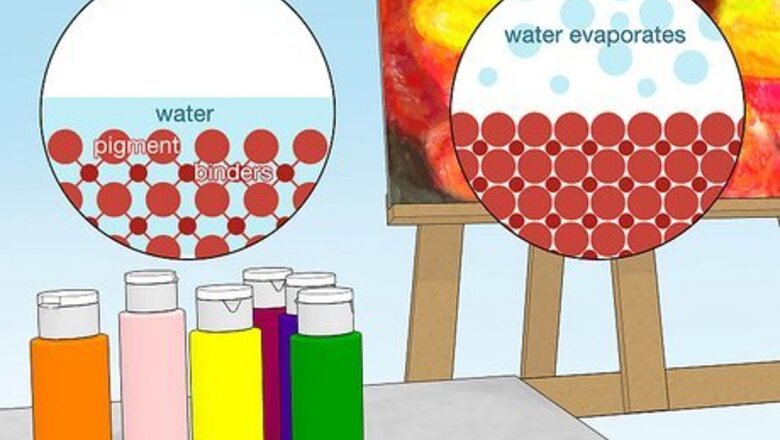
views
- Acrylic paints are water-based and water-soluble, meaning they dry quickly and are easy to wash away with just some warm, soapy water.
- Most acrylics are also non-toxic and fairly cheap, making them ideal for young or inexperienced artists.
- Oil paints, however, are oil-based. This means they take days or weeks to dry, and are only washed out of brushes or clothing with turpentine or mineral spirits.
Acrylic Paint Base
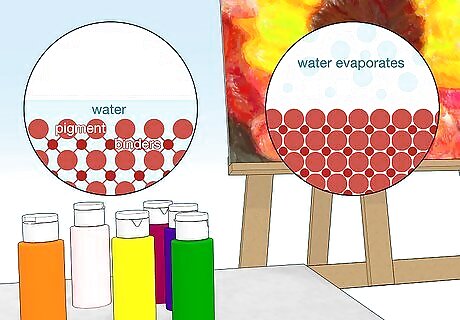
Acrylic paints are water-based. Acrylic paints consist of particles of pigment suspended in water, plus small molecules that bind the pigment to the canvas. When the paint is applied, the water evaporates, leaving the pigment and binders behind. This means that acrylics are also water-soluble, and that they’ll break down, or be washed away by water.
Other Paint Bases
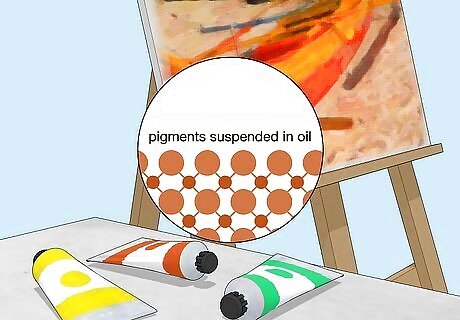
Oil paints consist of pigments suspended in oil. Often, they’re made with safflower or linseed oil. This means that they’re not water-based or water-soluble. Oil paints are an old and traditional medium that gained widespread use all the way back in the Renaissance. Since oil paints aren’t water-based, thin your oil paints with turpentine instead of water.
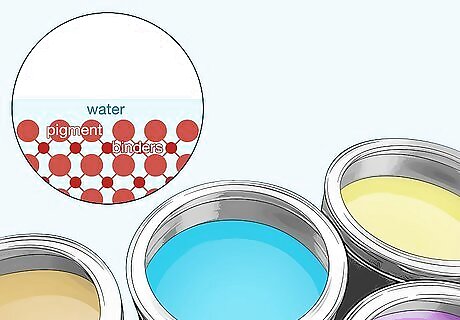
Like acrylics, latex paints are made of pigments in a water mixture. Really, “latex paint” is more of an umbrella term or general category of paints that all have varied formulas. Broadly, though, they tend to be water-based, water-soluble, and contain fewer chemicals than acrylic or oil paints. Latex paints are generally used for home improvement projects rather than fine art.
About Acrylic Paints
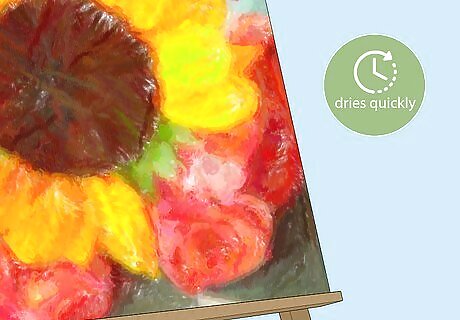
Drying time Acrylic paints dry relatively quickly, sometimes just a few seconds after they’re applied to the canvas. That means that when painting with acrylics, you need to make confident strokes, since once the paint is applied, you won’t be able to move it around the canvas or mix it. Instead, you’ll need to paint over it.
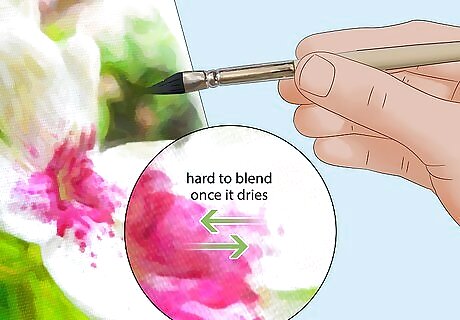
Blending Acrylic paints are difficult to blend once on the canvas since they dry so quickly. Other paints with slow drying times are able to be manipulated, moved, and mixed once on the canvas. For the most part, once acrylic is down, it’s not going anywhere. That said, you might still blend acrylic paints by thinning them with water, or by using a wet brush. Usually, though, acrylic artists tend to mix their colors on a palette before applying them to the canvas.
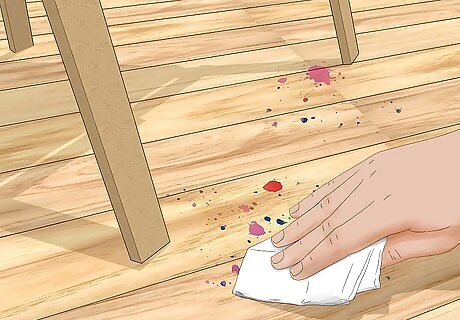
Cleaning up Acrylic paints make relatively little mess, and are easy to clean or remove from clothing. That’s thanks to the quick drying time and water-based composition. Since acrylics are water-soluble, simply clean your brushes (or clothes, carpet, etc.) with warm, soapy water, and the acrylic will break down and lift right off. Of course, you may need to launder your clothing to completely remove stains. Use warm water and your regular detergent. Or, wet a rag with latex paint remover and use it to dab at the paint stain until it lifts.
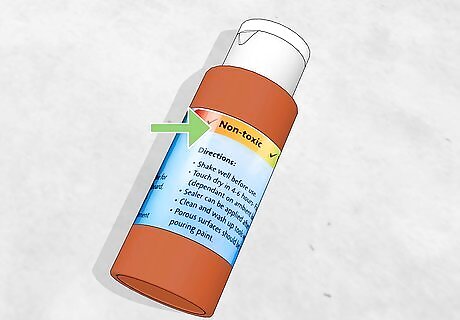
Toxicity Acrylic paints tend to be non-toxic. Of course, you should never ingest them, but when working in a studio, it’s no big deal if acrylic paint gets on your skin, and so long as you have a window open, you won’t need to worry about fumes. That said, some artists have unexpected allergies to acrylic paints. Consult a doctor if you experience adverse side effects when in contact with acrylic paints. Although acrylics are non-toxic, avoid pouring them down the sink. Instead, dispose of acrylics by letting the leftover paint harden, then tossing it in the trash or bringing it to a local paint shop that recycles paint.

Durability Acrylics can withstand both time and sunlight. They won’t easily fade, and will remain vivid for years (depending on the brand), particularly when finished with a paint sealer. Because they’re water-soluble, however, acrylic paints are vulnerable to spills or other mishaps, and you’ll need to touch them up afterward. Thankfully, since acrylics dry quickly, acrylic paintings are easy to touch up.
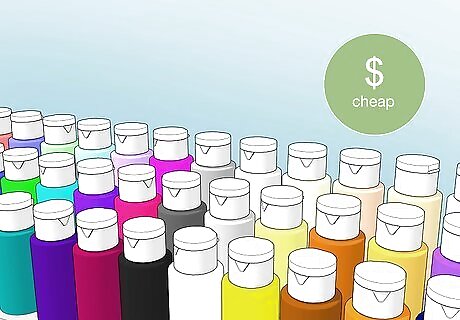
Cost Acrylic paints are relatively cheap. Introductory sets of acrylic paints are sold for as little as $15. Of course, higher-quality paints in a wider range of colors will take a bigger chunk out of your wallet, but compared to other mediums, acrylics are cost-effective and easy on the budget. If you’re just starting out, look for a “student-grade” acrylic set. These are lower-quality, cheaper paints, but will serve you perfectly well as you get your bearings.

Learning curve Acrylics are beginner-friendly. The fact that acrylics dry quickly means that there’s no tricks when putting them on a canvas—the color you put down is more or less the color you get. This makes them easy to grasp for new painters. That they’re low-cost, easy to clean, and fairly durable makes them ideal for fledgling artists exploring the medium. That said, acrylics are also used widely by advanced painters—they’re not just for newbies!

Finish Acrylics dry matte, flat, and vibrant. Because the paint dries quickly, it’s a bit trickier to build up textures. Acrylics also dry a touch darker than the shade they were when they were applied. Even so, acrylics still provide vibrant colors that are perfect for paintings that are full of life.

Most suitable projects Use acrylics as a general-purpose, versatile paint. They’re great for projects that need vivid colors, as well as large paintings that require a lot of paint, and therefore a bigger budget. In addition, they’re also perfect for young or inexperienced painters, since the materials are non-toxic and behave predictably. Acrylics are best used on paper, canvas, glass, metal, fabric, or wood surfaces. Acrylics aren’t ideal for most home-improvement projects, but are great for painting small objects.
About Oil Paints

Drying time Oil paints dry very slowly. It takes days or even weeks or months for oil paints to dry completely, depending on how much oil you lay down on the canvas. For this reason, oil paints are easily manipulated—putting your brush onto the canvas is just the first step. You can also come back to a painting days later and pick up blending where you left off, since the paint will still be wet. This also means that it’s easy to store oil paints, and that they have long shelf lives. Oils can even be stored on a palette under some cling wrap between painting sessions.

Blending Oil paints are extremely blendable. Since they don’t dry immediately, you’re able to move the oil paint around and mix it with other colors, even after you’ve laid it onto the canvas. This makes painting with oils ideal for achieving smooth gradients and much more subtle colors on the canvas.

Cleaning up Oil paints tend to be messy. Since they aren’t water-soluble and don’t dry quickly, oil paints are somewhat difficult to clean and also tend to get everywhere—they’ll transfer from your brush to your clothes, and from your clothes to the walls and beyond if you’re not careful. To clean your oil brushes, use turpentine or mineral spirits to break down and remove the paints. The same goes for cleaning your clothes, though you may have to say goodbye to your beloved T-shirt in the event of a mishap. Always wear an apron or old clothing reserved specifically for painting when using oils to avoid soiling your good clothes.

Toxicity Oil paints emit toxic fumes. Many oil paints are made with heavy metals or toxic solvents that may cause internal damage to your body. Often, oil painters opt to wear masks when working with oils. Some even wear gloves to protect their skin. Always use oils in a well-ventilated room, and never ingest the paint. In addition, dispose of used oil paints at a waste collection site or processing plant. Never pour old oil paints down the sink. Often, student-grade oil paints are specially formulated to be non-toxic. Use these if you’re concerned with health risks posed by paint fumes.

Durability Oil paint is extremely durable. Oil paintings are known to last years—even hundreds of years—without cracking or fading. Just look at any classic oil painting, like the Mona Lisa. That said, if not stored correctly (at a stable temperature and away from sunlight), oil paintings do tend to discolor or even crack, as the air and UV rays interacts with the paint. In addition, oil paints have incredibly long shelf lives, with some lasting up to decades, even after opened.

Cost Oil paints tend to cost more than other paints. While there are plenty of low-budget sets on the market (starting around $15-20), a set of quality paints that offer all the trademark benefits and traits of oil paints tend to run at a higher price than acrylic or latex (often more than $5 per small tube). And if you’re an artist who executes large projects, or even just likes to slather on the paint, that cost will build up quickly. Like acrylics, “student-grade” oil paints are typically lower quality, but also lower cost, and are ideal for artists new to the medium who want to give the paints a try without breaking their bank.

Learning curve Oil paints take a bit more practice than other mediums. Since oils don’t dry on contact, many artists experience a bit of a learning curve when they first approach these paints. Oil sometimes seems to have a mind of its own as it blends and mixes on the canvas, and artists must be sensitive to how their pigments will interact. That said, some artists find the way that oil paints continue to stay “active” or wet fairly intuitive or even forgiving. It all comes down to preference!

Finish Oils dry with plenty of texture, but may lose some vibrance over time. While acrylic dries darker, oils tend to dry exactly how they were laid down, with high color accuracy. And because of the consistency and buildable quality of oils, it’s easy to achieve a variety of textures with the paint. But oils do tend to shift color over longer periods, and often take on a yellow tinge due to oxidation, as evident in many classical paintings.

Most suitable projects Oils are great for long-term projects, like portraits. Since oils don’t dry right away, they’re great for slow painters, or paintings that will take a while to complete. Their blendability also lends itself to more realistic or subtle styles, where precise colors and smooth gradients are a must. Oil paints are best used on a canvas surface, but artists may find success on wood boards or even walls (when mural painting). Oil paints generally aren’t suitable for home-improvement projects, since they dry so slowly.
About Latex Paints

Drying time Latex paints typically dry in 15-20 minutes. That’s longer than acrylics, but still much shorter than oils. Since they don’t dry on contact, latex paints may still be manipulated some after they’ve been laid onto a canvas. This makes them ideal for painting large surfaces, like walls, where the paint needs to be evenly blended to conceal strokes.
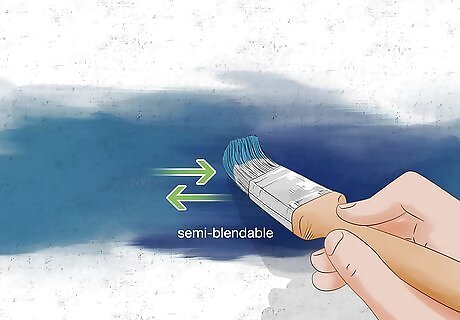
Blending Latex paints are semi-blendable. After you lay the paint on a surface, you have a few minutes in which you can manipulate it and mix it with other colors on the surface. Unlike oils, though, latex paints dry fairly quickly, and so the window for blending is relatively short. Generally, latex paints are mixed before application, at a hardware store, rather than on a palette.

Cleaning up Latex paints are easy to clean. Since they’re water-soluble, all it takes to get latex paints off brushes or out of clothes is some warm, soapy water. This makes them ideal for home craft projects or large-scale projects where unwieldy tools like paint rollers may cause some mess.

Toxicity Latex paints are often non-toxic when dry. That said, like many paints, they still emit some fumes when they’re wet, and may cause dizziness, headaches, or nausea when applied in a poorly-ventilated area. In addition, some latex paints contain iron oxide or titanium dioxide, which can be toxic when inhaled in large quantities.

Durability Latex paint generally has limited durability. They typically aren’t water or UV-resistant, tend to peel with temperature fluctuations, and can chip when applied to rough surfaces. They often require a base coat like primer to prepare the surface for painting. Often, they last up to 10 years while sealed in the can.
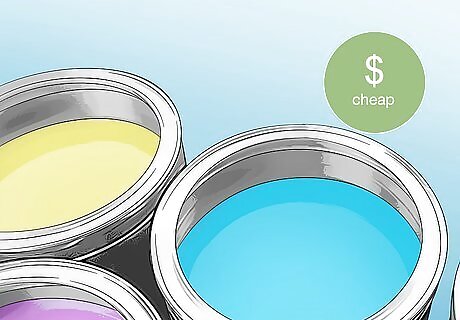
Cost Latex paints are cost-effective. Latex paints are not only cheap (around $8-10 per canister), but come in large quantities, since they’re primarily used for home improvement. Since they come in buckets, however, obtaining more than a few colors becomes costly.
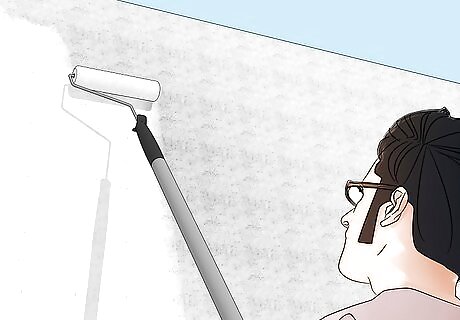
Learning curve Latex paints are beginner-friendly. Applying and using latex paints is fairly straightforward: prime the surface with a primer, then paint in broad, even strokes. They’re ideal for home improvement or craft hobbyists, but aren’t the first choice for many fine artists.

Finish Latex paint has fairly good color accuracy and dries either matte or glossy. Of course, it tends to dry a bit differently than it went on, but that’s where color swatches and paint chips come in. Typically, you decide what colors you’ll use long before you start painting.

Most suitable projects Latex paints are best for home improvement projects. They’re not quite as reliable as acrylics, and they don’t blend like oils. They do, however, come in large quantities of a single color, and so are ideal for painting walls, furniture, or even murals.




















Comments
0 comment